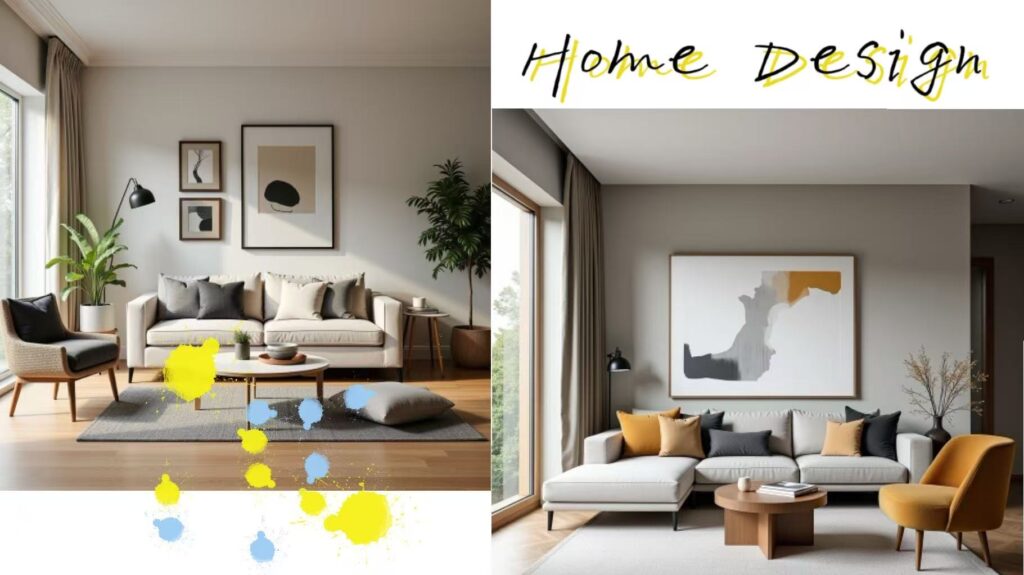Table of Contents
Introduction
The integration of artificial intelligence (AI) into our daily lives is no longer a futuristic fantasy but a present reality. From self-driving cars to personalized shopping experiences, AI is rapidly transforming various industries. One of the most exciting applications of this technology is in the realm of AI home design. This revolutionary concept utilizes artificial intelligence to assist or even automate aspects of both interior and exterior design, promising to reshape the way we create and experience our living spaces.
AI home design is poised to revolutionize the industry. Leveraging artificial intelligence, it offers innovative solutions for interior design challenges. This article explores how AI is revolutionizing home design, shaping the future of home design and providing personalized, efficient, and inspiring design solutions.
The Rise of AI in Interior Design: Transforming Spaces with Technology
The integration of AI is becoming increasingly prevalent across various sectors, and the home design industry is no exception. The growing trend of using AI in interior design reflects its potential to streamline processes, enhance creativity, and personalize spaces in unprecedented ways. Furthermore, the increasing accessibility and affordability of AI design tools have democratized the design process, making professional-quality design assistance available to a wider audience. This technological shift marks a significant evolution in how we approach and execute home design projects, blending the art of design with the precision and efficiency of artificial intelligence.
AI in interior design is no longer a novelty but a practical solution. The proliferation of AI design tools means homeowners and designers can now harness technology in home design to achieve stunning results. This era of digital home design is about more than just aesthetics; it’s about creating functional, beautiful, and personalized spaces. Ultimately, **modern interior design** is being redefined by the power of AI.
Key Benefits of Using AI for Your Home Design
Enhanced Visualization and Planning
One of the most significant advantages of AI in home design is its ability to provide enhanced visualization and planning capabilities. AI tools enable users to visualize their design ideas in both 2D and 3D, offering a realistic preview of the final result. This includes virtual staging, which allows users to see how furniture and decor will look in their space before making any purchases, and 3D rendering capabilities that create photorealistic images of the proposed design. These features are invaluable for making informed decisions and avoiding costly mistakes.
Through AI, visualization is simplified. 3D rendering offers a realistic view of your future space, and virtual staging helps you experiment with different furniture arrangements. Thoughtful design planning is now more accessible than ever, allowing for optimal space planning and layout design.
Time and Cost Efficiency
Traditional home design can be a time-consuming and expensive process, often involving multiple revisions and professional consultations. AI offers a more efficient alternative by automating many of the design tasks and providing instant feedback. This can significantly speed up the design process and reduce the need for extensive revisions or professional consultations in the early stages, leading to potential cost savings. By leveraging AI, homeowners can achieve their desired look without breaking the bank.
Time-saving design is a major draw for AI home design tools. The potential for cost-effective design is equally appealing. Homeowners can enjoy efficient home design processes that lead to faster interior design outcomes. Ultimately, AI delivers affordable design solutions to a wider audience.
Personalized and Customized Designs
AI algorithms can analyze user preferences, such as style, color, and layout preferences, to generate personalized design suggestions. This level of customization ensures that the final design reflects the individual’s unique taste and needs. Furthermore, AI can adapt to changing preferences and provide ongoing recommendations, making the design process truly collaborative and tailored to the individual.
Personalized design is at the heart of AI home design. Achieve a customized home design that reflects your unique style. AI style recommendations ensure your space is perfectly tailored. Discover tailored interiors that match your individual design preferences.
Inspiration and Idea Generation
AI tools can provide a wide range of design ideas and inspiration, helping users to explore different styles and concepts quickly. Whether you’re looking for a modern, minimalist aesthetic or a cozy, farmhouse vibe, AI can generate a variety of options to suit your taste. This can be particularly helpful for those who are unsure where to start or are looking to break out of their design comfort zone.
Design inspiration is readily available thanks to AI. Explore a world of home decor ideas and enjoy seamless style exploration. The concept generation capabilities of AI tools make for a truly creative design process.
Exploring the Top AI Home Design Tools and Platforms
AI-Powered Interior Design Software
A number of innovative AI interior design software solutions are available today, each offering unique features and capabilities. These platforms are changing the landscape of home design, providing accessible and intuitive tools for homeowners and professionals alike. Some leading examples include:
1. PromeAI
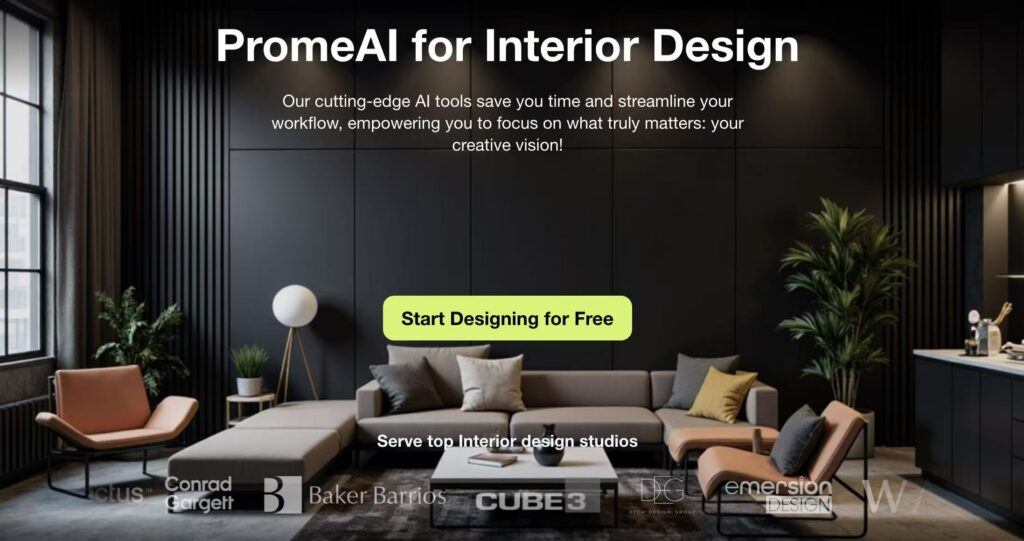
Specializes in generating design ideas based on user-specified style preferences and requirements.
2. Spacely AI
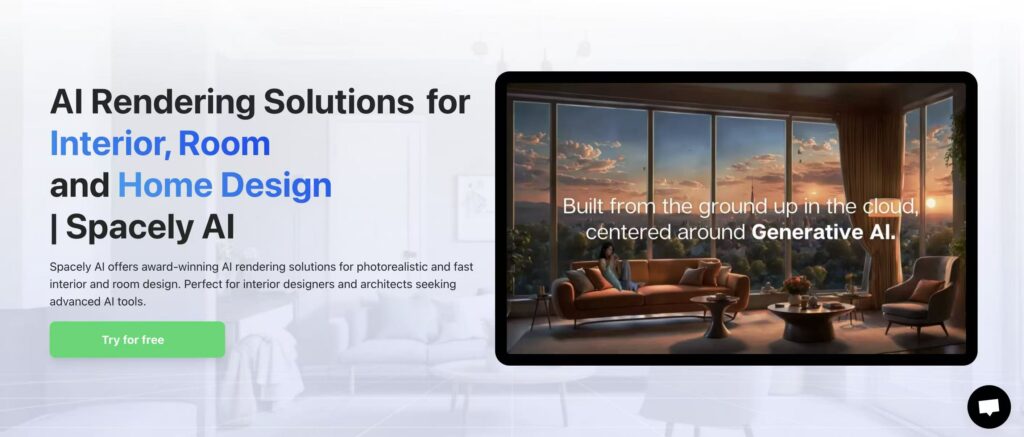
Known for its user-friendly interface and ability to generate realistic 3D renderings.
3. RoomDeco
An app that specializes in providing quick and easy room design suggestions based on user-uploaded photos.
4. Homestyler
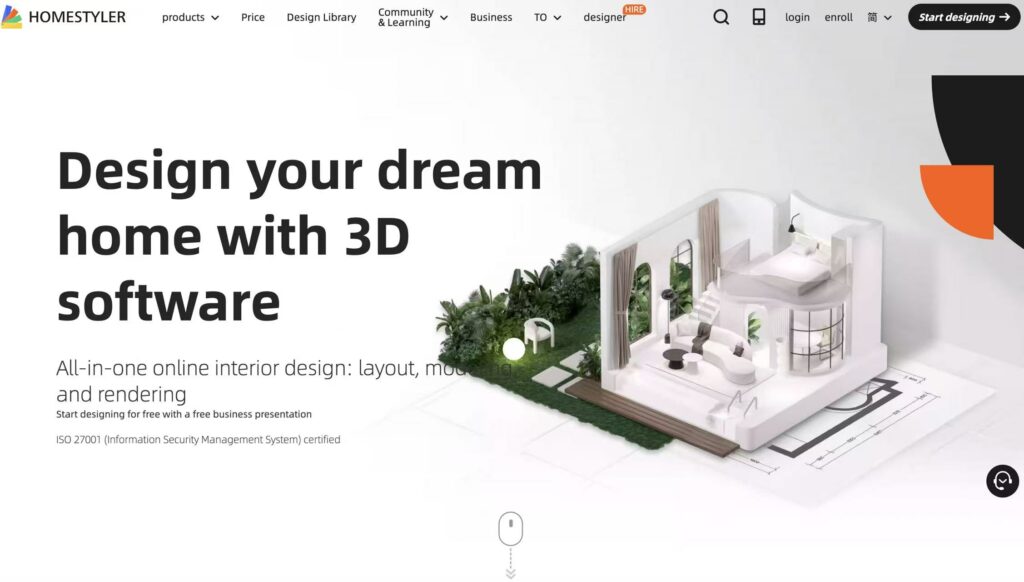
A comprehensive platform that offers a wide range of design tools, including 3D modeling, virtual staging, and furniture selection.
5. Visualize AI
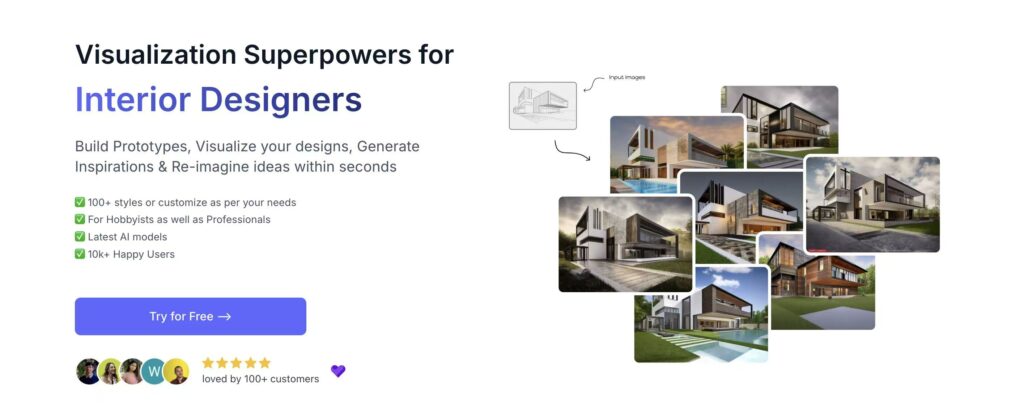
Focuses on creating photorealistic visualizations of interior designs, allowing users to see their ideas come to life.
6. DecorMatters
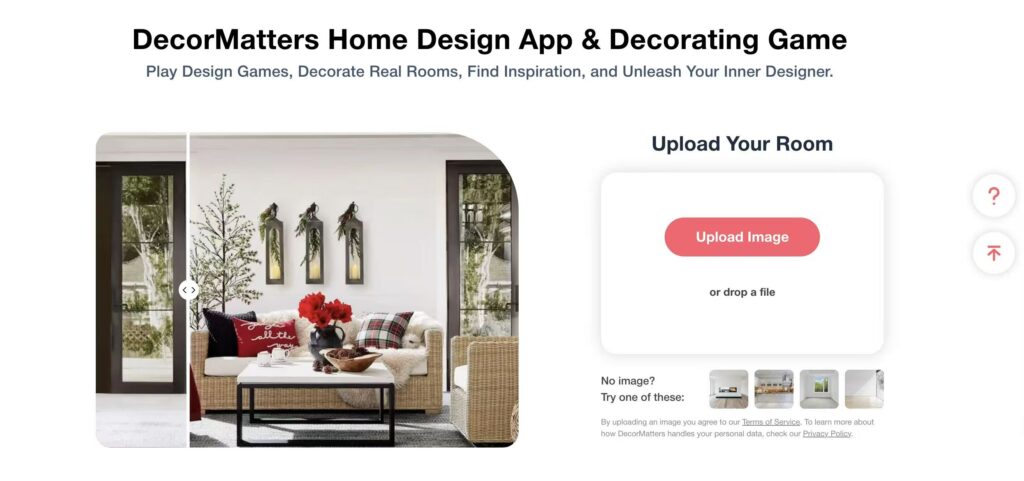
Combines AI with augmented reality (AR) to allow users to virtually place furniture and decor items in their homes.
7. REImagine Home
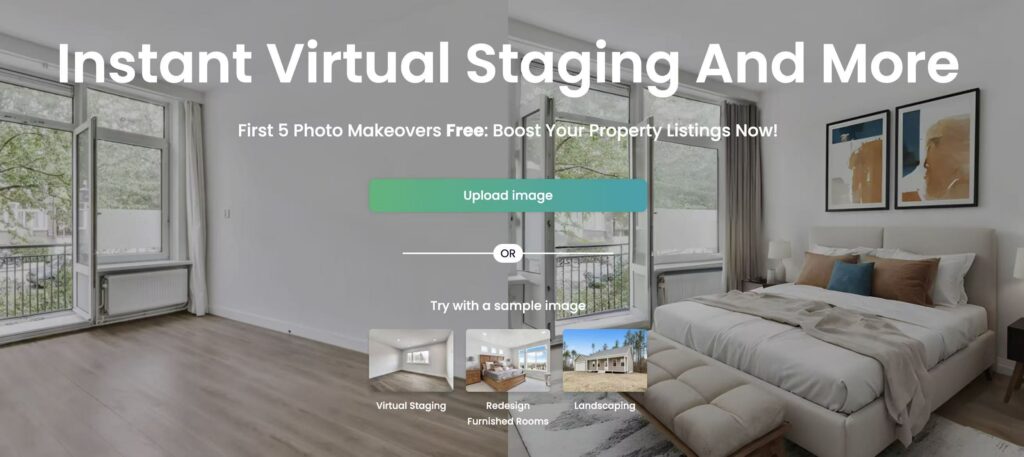
Offers a range of AI-powered design tools, including room layout planning and furniture arrangement.
8. Coohom
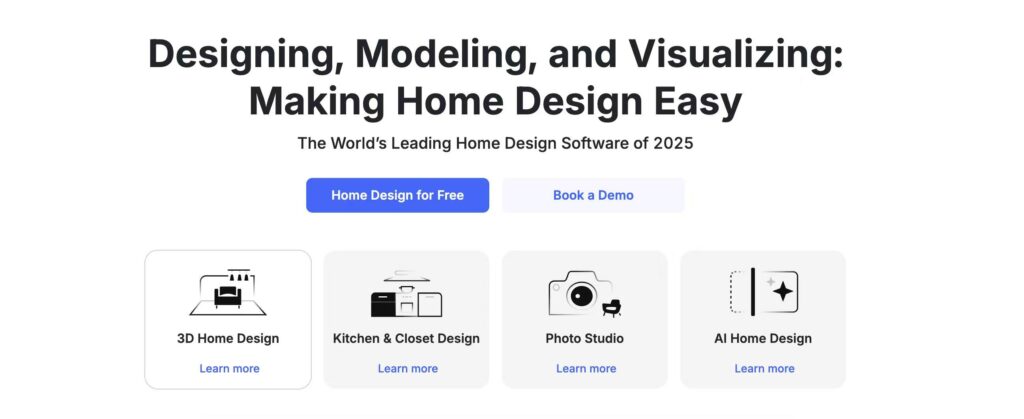
A platform that provides 3D modeling, rendering, and virtual staging tools for interior designers and architects.
9. MyArchitectAI
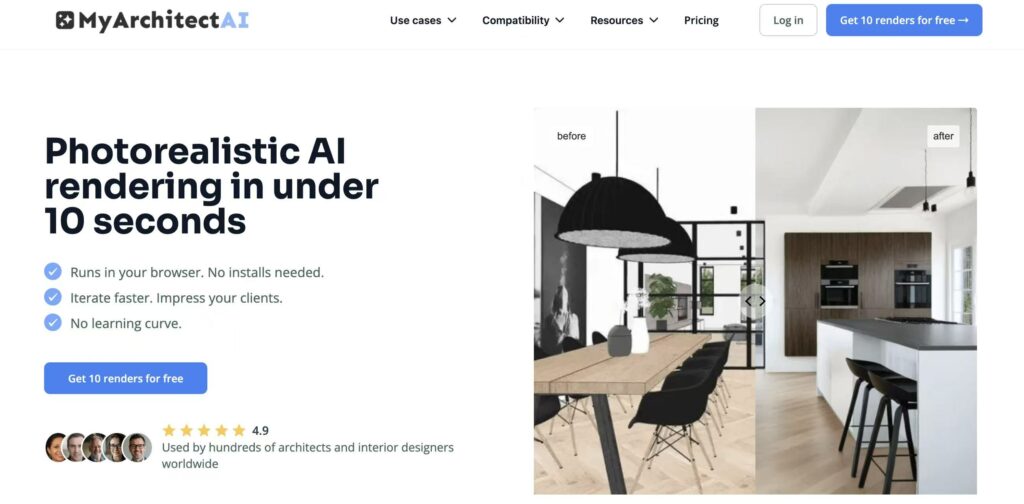
Focuses on providing AI-powered architectural design services, including floor plan generation and building design.
These best AI design tools and top AI home design platforms are not just for professionals. They empower anyone to create beautiful and functional spaces. Whether you’re looking for Spacely AI, RoomDeco, Homestyler, Visualize AI, DecorMatters, REImagine Home, PromeAI, Coohom, or MyArchitectAI, there’s an AI solution to meet your needs.
AI Features in Existing Design Software
Beyond dedicated AI design platforms, established design software like Adobe Photoshop are also integrating AI features to enhance their capabilities. For example, Adobe Firefly allows users to generate and modify images using AI, opening up new possibilities for creating custom textures, patterns, and design elements. This AI integration is particularly beneficial for professional designers, as it streamlines their workflow and allows them to explore more creative options.
This AI-enhanced design is transforming the industry. Even familiar professional design software is getting a boost from AI. With tools like Adobe Photoshop and Adobe Firefly, designers can push the boundaries of creativity. This marks a new era of design software with AI capabilities.
How to Use AI for Your Home Design Project: A Step-by-Step Guide
Choosing the Right AI Tool
The first step in using AI for your home design project is to choose the right tool based on your specific needs and preferences. Consider factors such as ease of use, style preferences, available features, and budget. Some tools are better suited for beginners, while others offer more advanced capabilities for experienced designers. Reading reviews and trying out free trials can help you make an informed decision.
Choosing AI design software can feel daunting, but it doesn’t have to be. Think about your specific needs when selecting AI tools. Find the best AI tool for beginners if you’re just starting out. Use an AI tool comparison to weigh the pros and cons of each option, and learn how to pick AI software that suits your style and budget.
Inputting Your Preferences and Requirements
Once you’ve selected an AI tool, the next step is to provide it with your design preferences and requirements. This may involve uploading photos of your room, specifying your preferred style, color palette, and desired functionalities. The more information you provide, the better the AI will be able to generate relevant and personalized design suggestions.
Provide clear AI design input to get the best results. Be specific when providing design preferences, and don’t hesitate to uploading room photos. Make sure you specify design requirements clearly to guide the AI’s recommendations.
Generating and Refining AI Design Suggestions
After inputting your preferences, the AI will generate a range of design options for you to review. Take the time to explore these options and provide feedback to the AI. You can iterate on the designs by adjusting parameters, adding new elements, or refining existing ones. This iterative process allows you to collaborate with the AI to create a design that perfectly matches your vision. Prompt engineering, which involves crafting precise and detailed prompts, can significantly improve the quality of AI outputs.
Explore AI design generation capabilities to spark new ideas. The key is refining AI designs through iterative feedback. Review the AI design suggestions carefully, and use prompt engineering to get the best results. This AI design iteration process ensures you’re happy with the final outcome.
Implementing AI Designs in Reality
Once you’re satisfied with the AI-generated design, it’s time to bring it to life. Use the design as a blueprint for your actual home renovation or decoration project. This may involve purchasing furniture and decor items that match the design, hiring contractors to make structural changes, or simply rearranging your existing space to align with the AI’s recommendations. Integrating the AI design with furniture shopping and contractor collaboration can streamline the implementation process.
Learn how to start implementing AI designs in your home. Use your designs as a guide for home renovation and interior decoration**. From furniture selection to contractor collaboration, AI can simplify the process of realizing AI designs.
The Future of AI in Home Design: Trends and Predictions
The future of AI in home design is bright, with potential advancements on the horizon. We can expect to see more sophisticated personalization, integration with smart home technology, and augmented reality applications. AI may also play a larger role in sustainable design, helping homeowners to create eco-friendly and energy-efficient spaces.
The future of AI in design is full of possibilities. Stay ahead of the curve by understanding the latest AI design trends. Expect seamless smart home integration and immersive augmented reality design experiences. The next generation of advanced AI in interiorsvpromises to redefine next generation home design.
Conclusion
AI is transforming the way we design and experience our homes. By offering enhanced visualization, time and cost efficiency, personalized designs, and endless inspiration, AI is empowering homeowners and designers alike to create living spaces that are both functional and beautiful. As AI technology continues to evolve, its impact on the home design industry will only grow stronger, shaping the future of living spaces for generations to come. Embrace the AI design revolution and consider embracing AI in home design for your next project.

